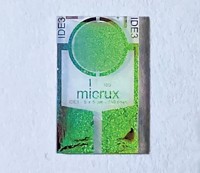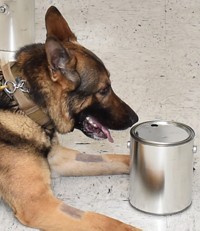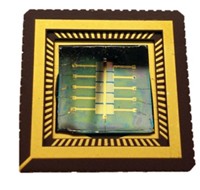Advertisement
Grab your lab coat. Let's get started
Welcome!
Welcome!
Create an account below to get 6 C&EN articles per month, receive newsletters and more - all free.
It seems this is your first time logging in online. Please enter the following information to continue.
As an ACS member you automatically get access to this site. All we need is few more details to create your reading experience.
Not you? Sign in with a different account.
Not you? Sign in with a different account.
ERROR 1
ERROR 1
ERROR 2
ERROR 2
ERROR 2
ERROR 2
ERROR 2
Password and Confirm password must match.
If you have an ACS member number, please enter it here so we can link this account to your membership. (optional)
ERROR 2
ACS values your privacy. By submitting your information, you are gaining access to C&EN and subscribing to our weekly newsletter. We use the information you provide to make your reading experience better, and we will never sell your data to third party members.
Chemical Sensing
Neural network measures gas below a sensor’s limit
A deep learning algorithm can find signals buried in noise
by XiaoZhi Lim, special to C&EN
May 6, 2020

Chemical sensors can act as sentinels for explosive gases like hydrogen or methane or for harmful volatile organic compounds before they build to dangerous levels. But typically, they can only sound the alarm when their target molecules accumulate above the sensor’s detection limit; by one definition, when signals generated are three times as high as background noise.
Jihan Kim and Hee-Tae Jung from the Korea Advanced Institute of Science and Technology wondered whether any hidden signals could be extracted from the noise using deep learning techniques, effectively lowering the detection limit for a sensor (Anal. Chem. 2020, DOI: 10.1021/acs.analchem.0c00137).
Machine learning is famed for being able to pull patterns from a vast store of data. Instead of seeing whether signals cross the detection limit at any instant, an algorithm that has gotten used to a sensor’s normal output over time can pick up hidden signals when something in the sensor’s output changes. “The algorithm does not look at the limit of detection, but it looks at the turns in the data,” explains Ahmet Enis Cetin, an electrical engineer at the University of Illinois at Chicago who was not involved with the study. Other than making it possible to go below the limit of detection, algorithms could also help aging sensors cope and reduce sensors’ calibration needs, Cetin says.
Kim, Jung, and their colleagues tested the idea out on metallic thin-film sensors used to measure hydrogen. They fabricated four sets of six individual sensors from platinum, palladium, gold, nickel, copper and molybdenum. With a constant voltage applied across the metals, their resistances change as gases come into contact, thus creating a signal. The platinum sensors began detecting hydrogen at 50 ppm, and the palladium sensors at 10 ppm. The other four metals did not produce a signal even at 100 ppm.
The researchers first trained two neural networks per sensor to reproduce the sensors’ output in response to a stream of pure nitrogen gas. Then, they fed the sensors’ output signals produced in response to 2.5 and 10 ppm hydrogen mixed into the nitrogen, much lower than the sensors’ detection limits. Because the presence of hydrogen was not something the neural networks were trained to reproduce, it led the networks to begin making large errors. So, errors that exceeded a threshold set by the researchers meant that the neural networks managed to detect hidden signals corresponding to hydrogen, Kim explains.
The researchers estimated that the combined array of 48 neural networks, including the quartet of metals that didn’t produce signals, were between 60 to 80% accurate at detecting the presence of hydrogen.
The researchers also showed the approach worked for hexane gas and built a semiconductor sensor that worked for toluene gas. As for whether the approach could be used for liquid-based sensors or biological signals: “In principle it is possible to apply to any other sensing platform, but it remains to be seen if other sorts of applications have these hidden signals,” Kim says.
Serious challenges remain. The networks took some 30 min to process the hydrogen-containing data before the hidden signals appeared, Kim says, which is too long. The researchers also hope to tackle a more complex natural environment, like air, and attempt introducing two or more analyte gases to see if the networks can distinguish them.





Join the conversation
Contact the reporter
Submit a Letter to the Editor for publication
Engage with us on Twitter